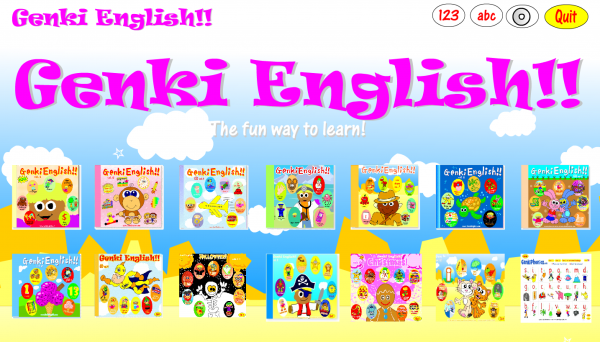
One of the great “Should I? Shouldn’t I?”s of teaching is whether to give out prizes or not.
Personally I tend not to. Although passports can be a great idea for long term classes.
But if you do give out prizes, then something you might want to consider is the addiction element of *randomness*.
With our pretty simple evolved monkey brains, then if a reward is regular we pretty much tune it out. iPad update every year? Blah! A choco every time for full marks on a test? Blah!
But …. if we introduce a sense of randomness then all of a sudden, just like magic, we start paying attention.
It’s the reason you are addicted to Facebook and email. You know there’s probably nothing there. But then again there might just be! So you keep checking. And checking. And checking.
I’ll leave the moral aspect of whether it’s fair to use this technique up for discussion, but if you do decide to go for prizes them try not to have a regular trigger for giving them out. Keep the kids on their toes.
Will they get a prize this time? Yes? No? Oh, maybe next time, let’s just be good one more time and see. Keep them sparse but good and you’ll be amazed at how positive habit forming it can be, and how addictive it can become!
(Evil note: this is how chain schools keep their students. Students are kept in the dark as to when they’ll be “put up a level,” but magically just as they are thinking about leaving, oh they get into the next class! Needless to say, don’t do this in your school!)
And of course for bad behaviour, we want the opposite, we want the kids to lose interest in doing bad stuff, so always keep the rules really strict and regular. We want those to be enforced like a robot, so that the kids lose the sense of challenge and just give up!
But for the good behaviour, keep in a bit of randomness.
What do you think, comments in the comments please!
P.S. New game coming for you soon. Not sure when, but soon. Maybe. 😉




I tried a lottery system. I figure, since I teach in Taiwan that kids are exposed to gambling at an early age. Anyway, the kids got tickets for being good and I picked a few names randomly every week. The kids that were picked could go to choose prizes. I thought I was smart because I didn’t need to price things like my co-teachers. That adds up to a lot of work. The kids loved it, but it also caused arguments because some good kids didn’t get prizes.
I also have another system. When a kid collects enough stickers he can get a prize. All my prizes are in brown paper bags so nobody can see what is inside. They can choose any bag, but they can’t open it until they get home. If they open it in the classroom, I have the right to take it back. That solves a lot of problems with kids fighting about who got what. I also put a little card with a motivational saying in each bag with the prize. The kids go home and show their parents and the parents love the little sayings (ex: Success is getting up one more time than you fall down). At the end of the year, some of them tell me how they discuss the meaning with their kids.
I have given away stuff in the past but I find that in the long run it damages the lessons. Children can get bullied for their prize in the playground, the exercises that don’t have prizes in are seen as even more boring than before, and it can be seen as a kind of bribe (be good, pay attention and you might get a reward).
Personally, if a teenager to adult student does well, I will praise them. If not, I won’t. But if a child does well, I have been known to pop a small note to their parents letting them know how pleased I am with them in the class.
Dillon
(Poland)
Adam,
I like the brown paper bag idea and the saying inside.
I also use passports and usually they get one sticker per lesson (so they would need to come about 50 times to get a full passport, which is when they an choose a present from my box.
They get the sticker for answering about 3 questions one by one.
Anyway, SOMEtimes I tell them after our first activity, how good they are today, or how well they are prepared, and that I’m going to give them 2 stickers today. This works wonders. It always creates best lessons, even without me saying: “if you are this good till end of class…”
No need for pressure.
Also sometimes I allow them to put a sticker in there for reading a certain story a certain amount of times.
It’s amazing how they are not tempted to cheat at all. I guess they just know I would figure out wether they have practiced or not.
Margit,
I use color coded stickers. They start with lighter colors and every ten stickers they go up one level and the stickers are darker colors. The color scheme really attracts attentions. Every time they go up a level, they come to the front of the class and I have everybody cheer for them. The last color is silver. It’s really shiny.
I like the idea of going from pale to brighter colours, finishing with a shiny sticker or badge. I find that the children respond well to praise, too, and there is always some quality I can point out with each child, whether they’ve contributed their energy, been good listeners or always done their homework.
I like the passport idea because it rewards effort, which means the students who have difficulty will be motivated to keep trying.
Hi,
Can someone please explain what is the passport and how to properly use it in the classroom. Thanks!!!
Hi, I designed my own, fairly compact, bilingual passport for my school. I use it as a motivational tool and for homework information. Each week has a double page spread. I give the child a ‘lesson evaluation’ on discipline, effort, participation and behaviour. There are tick boxes 1 to 5. Then, I have the homework requirements. The students have to write the pages which they need to review and preview, also what homework pages need to be completed. I have a section for target language practice too. I also have a parent section that the parents need to tick to ensure that their child completed their homework. Finally, I have a section that I stamp with my schools logo. Once they get 30 stamps they receive a small prize. It has a hard front and back cover, embossed with gold writing Paul’s Passport, with the school’s name. The inside leaf has my class rules, followed by the students information, complete with a place for their passport photo. The back leaf has tips on how to improve their English and my mission statement for my school. They didn’t cost very much to produce and the kids and parents love them.
I’ve used reward charts where I had to cut down the prizes cause it was turning expensive on me! LOL So I brought them down to once a month. The prize was a small bag of sweets and a “diploma/certificate” for the student with the most stickers.
The chart was divided into 4 sections: behaviour, cleaning up after oneself, participation and how hard one worked. At the end of each day, I put a sticker in each section, if deserved. I always do this when they’re gone to make their anticipation grow.
The next day, they’d all join at the chart to see how many stickers they had earned and if in doubt, they’d ask me. I am very fair, so once I’d explain why someone didn’t get it, they would accept it.
At the end of the month, the student (s) with the most stickers got their prize.
Did they start to count on this? Yes! Did it work? YES!
I usually stop the reward charts when the kids go a couple of months with flying colours. This last year due to a problem or two with the parents, it took a bit longer. (I started using the reward chart on middle of second term – of three). By the end of the course, I could’ve dropped it, but with a month to go till the end of the course, I just let it run. The competitiveness between the tots was amazing and their behaviour wonderful, so I let it run.